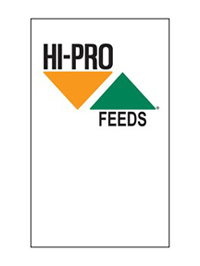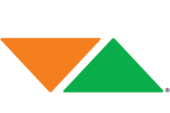
Nursing Formula (Non-Medicated)
Tag:
500051
Form:
Powder
Weight:
32 lbs.
- Beef, Goat, Sheep, Swine
Hi-Pro Nursing Formula provides balanced nutrition to orphaned animals.
Features & Benefits
| Features: | Benefits: |
| All milk protein milk replacer | Improves digestibility of milk replacer which results in improved animal health and performance. |
| Easy directions for multiple species of animals | Allows a producer to use one milk replacer for all species. |
| Designed to maintain freshness | Plastic pail design allows you to reseal the milk replacer between feedings to help maintain freshness of the milk replacer. |
| Dairy/Beef calves, goats, domesticated canines & felines & pig milk replacer | One measuring cup (enclosed in the bag) holds approximately 1/4 pound of dry milk replacer. High-Quality By-Pass Proteins. |
Feeding Directions
In any calf raising program, it is important that calves receive colostrum for the first three days. Newborn calves should receive three quarts of colostrum in the first feeding as soon after birth as possible (within one hour) and again 12 hours later. For days two and three of life, feed two quarts of colostrum twice daily to calves. Starting the 4th day, mix and feed Hi-Pro Nursing Formula according to the following directions. Mixing: Measure two quarts of clean, warm water (110°F.) into a clean bucket. Sprinkle 2 measures* (1/2 pound) of milk replacer onto the water surface and mix thoroughly. Feeding: Beginning on day four, introduce milk replacer. - Light Breed Calves: one and a half to two quarts of liquid milk replacer twice per day. - Heavy Breed Calves: two to two and a half quarts of liquid milk replacer twice per day. Goats: Use the plastic cup provided to measure the milk replacer powder. Each cup holds about 1/4 pound of powder. Mix one level cup of Hi-Pro Nursing Formula in one and a half pints (or pounds) of 110-120° F. water by slowly adding the powder to water while stirring. Hand Feeding Guidelines Use the following schedule as a guideline for feeding reconstituted milk replacer:
| Age of Kid in Days | Number of Feedings Per Day | Maximum Pints Per Kid Daily |
| 1 | 4 | Colostrum |
| 2-3 | 4 | 1 |
| 4-5 | 3 | 1 |
| 16-10 | 2 | 1 ½ |
| 11- weaning | 2 | 2-3 |
| Age of Foal | Number of Feedings Per Day | Feeding Rates (Quarts) Per Foal Daily* |
| 1 day | - | Colostrum |
| 2-7 days | 4 | 4-8 |
| 2nd week** | 3 | 6-12 |
| 3rd week and 4th week | 3 | 8-15 |
| 5th week | 3 | 6-12 |
| 6th week to 8th week | 2 | 4-8 |
- Lambs should receive colostrum milk soon after birth. Remove lambs from ewes one day after birth, if possible, and start lambs on Hi-Pro Nursing Formula.
- Use the plastic cup provided in the bag to measure the milk replacer powder. Mix one level measure (about a quarter pound) of powder in one pint of water, or for large batches mix two pounds of powder with one gallon of water.
- Mix with warm (110-120°F.) water, stir while adding milk replacer powder.
- Hand Feeding: When hand feeding by bottle, powder should be fed at body temperature. The following feeding schedule is recommended:
- Keep milk replacer feeding equipment clean.
- Provide a high-quality creep feed at a few days of age and continue on a free-choice basis. Fresh, clean water should be provided at all times.
- Lambs should be weaned from milk at four to six weeks of age or about 25 pounds of weight. Abrupt weaning can be used. However, reduced milk replacer feeding a few days prior to weaning to encourage creep intake may be desirable.
- If Scours Occur:
Guaranteed Analysis
<table> <tbody> <tr> <td><span style="font-weight: 400;">Crude Protein (min)</span></td> <td><span style="font-weight: 400;">22.0% </span></td> <td><span style="font-weight: 400;">Sodium (min)</span></td> <td><span style="font-weight: 400;">1.3%</span></td> </tr> <tr> <td><span style="font-weight: 400;">Crude Fat (min)</span></td> <td><span style="font-weight: 400;">20.0% </span></td> <td><span style="font-weight: 400;">Phosphorous (min) </span></td> <td><span style="font-weight: 400;">0.70%</span></td> </tr> <tr> <td><span style="font-weight: 400;">Crude Fiber (max) </span></td> <td><span style="font-weight: 400;">0.15 % </span></td> <td><span style="font-weight: 400;">Vitamin A (min)</span></td> <td><span style="font-weight: 400;">20,000 IU/lb </span></td> </tr> <tr> <td><span style="font-weight: 400;">Calcium (min) </span></td> <td><span style="font-weight: 400;">0.75%</span></td> <td><span style="font-weight: 400;">Vitamin D(Small3) (min)</span></td> <td><span style="font-weight: 400;">5,000 IU/lb</span></td> </tr> <tr> <td><span style="font-weight: 400;">Calcium (max)</span></td> <td><span style="font-weight: 400;">1.25% </span></td> <td><span style="font-weight: 400;">Vitamin E (min)</span></td> <td><span style="font-weight: 400;">100 IU/lb </span></td> </tr> </tbody> </table>
Proudly Warehoused In
